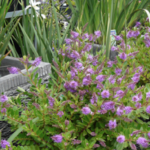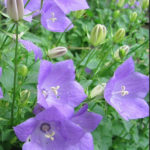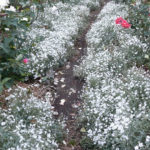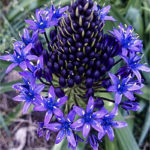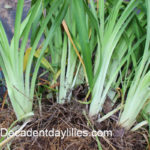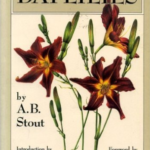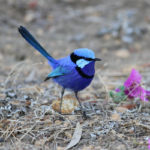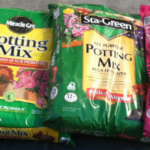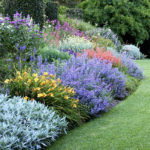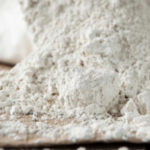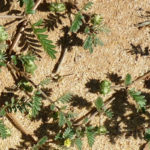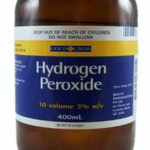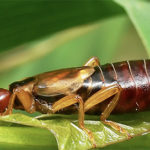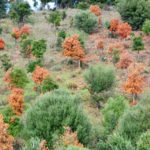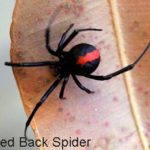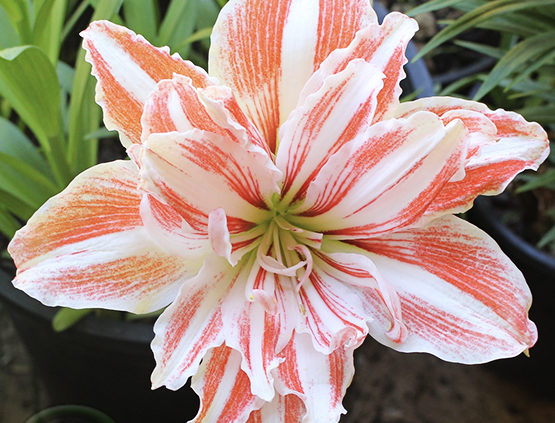
Hippeastrum Plants Bulbs
Hippeastrums are Unique Flowering Plants Grown from Bulbs
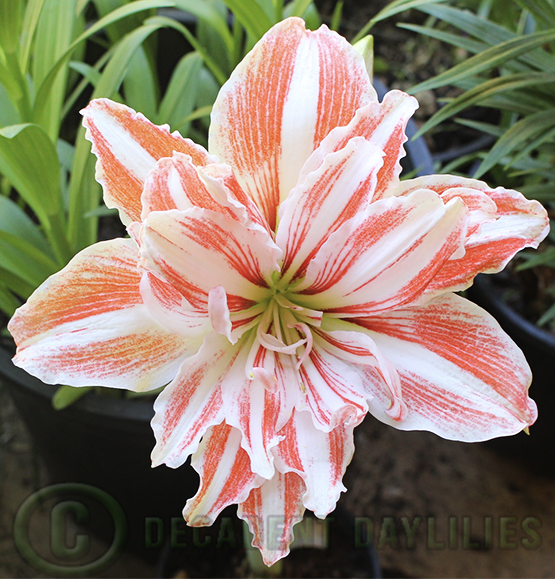 When you grow Hippeastrum Amaryllis the bulb usually produces 4 flowers per stalk that are exceptionally beautiful, big, and voluptuous, trumpet shaped blooms, that flowers in spring and early summer in Australia. As a rule, the flowers usually flower in a colour sequence by the red varieties flowering first, then the white hippeastrums do flower last. All other colours lemons, pinks, apricots, rose with the same colour or contrasting stripes, dotted and edged all flowering inbetween. Two of the popular Hippeastrum species grown in Australia are Vittatum and Reticulatum. There are 600 available hybrids the most popular hybrids are Apple Blossom, Jaffa, Lady Diana, Millennium Star, cocktail, red lion and Donna Mare. Here are three of my many seedlings photos on this page. Hippeastrums come in either double flowered or single flowered forms and are often talked about by gardeners in Australia by saying do you grow hippies? You can only grow hippeastrums outdoors in the garden if you live in a frost free zone. Because the Hippeastrum is from an exotic warm climate, nevertheless this bulb will still grow anywhere in Australia. When growing the Hippeastrum it is important to plant the bulb properly and provide it with the conditions necessary for its
When you grow Hippeastrum Amaryllis the bulb usually produces 4 flowers per stalk that are exceptionally beautiful, big, and voluptuous, trumpet shaped blooms, that flowers in spring and early summer in Australia. As a rule, the flowers usually flower in a colour sequence by the red varieties flowering first, then the white hippeastrums do flower last. All other colours lemons, pinks, apricots, rose with the same colour or contrasting stripes, dotted and edged all flowering inbetween. Two of the popular Hippeastrum species grown in Australia are Vittatum and Reticulatum. There are 600 available hybrids the most popular hybrids are Apple Blossom, Jaffa, Lady Diana, Millennium Star, cocktail, red lion and Donna Mare. Here are three of my many seedlings photos on this page. Hippeastrums come in either double flowered or single flowered forms and are often talked about by gardeners in Australia by saying do you grow hippies? You can only grow hippeastrums outdoors in the garden if you live in a frost free zone. Because the Hippeastrum is from an exotic warm climate, nevertheless this bulb will still grow anywhere in Australia. When growing the Hippeastrum it is important to plant the bulb properly and provide it with the conditions necessary for its 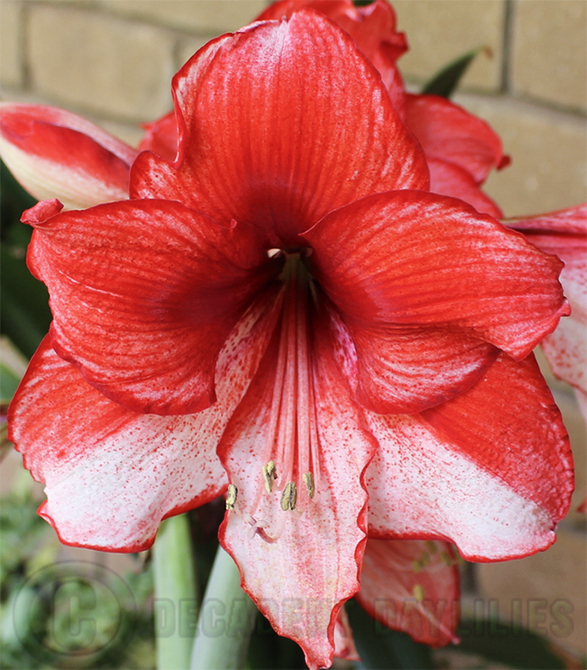 survival. Taking care of the Hippeastrum is also a high priority, as the plant requires watering procedures that are quite unique from other bulbs. It is necessary to maintain and look after the Hippeastrum and make sure that it is thriving in its own environment. Checking the bulb occasion is a great way to make sure that the plant is alright and doing well.
survival. Taking care of the Hippeastrum is also a high priority, as the plant requires watering procedures that are quite unique from other bulbs. It is necessary to maintain and look after the Hippeastrum and make sure that it is thriving in its own environment. Checking the bulb occasion is a great way to make sure that the plant is alright and doing well.
When to Buy your Hippeastrums
Individuals looking to grow their Hippeastrum both in their gardens, indoors, under eaves or front or back porch in a pot, will want to buy the perennial herbaceous, bulbous plant at some point between May and August at the latest, the obvious time when the Hippeastrum bulbs are dormant and asleep during winter, that is so the hippeastrum bulb can flower that same season.
Planting Repotting Hippeastrum Bulb
Hippeastrum growing conditions are different in all parts of Australia. When planting the bulb the depth of the bulb, you should make sure you leave the hippeastrum bulb’s nose and shoulders left planted above the soil. Growing or repotting the hippie bulbs in an organic mixture of cow, horse, or pig manures and rotted leaves, mixed in your soil allows for good drainage and helps with the growing process. If you cannot supply quality compost, the second option is to pot your hippies into quality damp potting mix with a complete slow release fertiliser such as blood and bone.
This can be given at planting time; this can also help to enhance the growing process, for when the side bulbs are forming. A feed of seaweed emulation is also a suitable fertiliser when the flower spikes are first seen. In addition, gardeners should be sure to place the bulbs in an area that will allow them access to a large quantity of spring sunlight. It is also best to give your hippeastrums a sprinkle of sulphate of potash in mid August this will help them to flower and grow well.
When and How to Water Your Hippeastrum
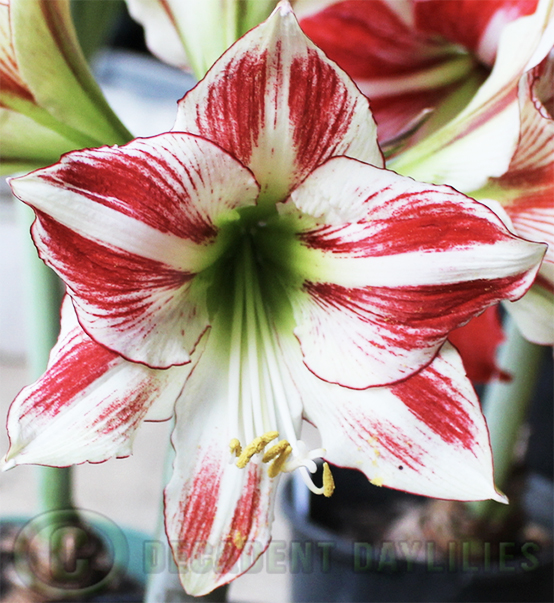 While it is essential to plant the Hippeastrum bulb correctly, it is just as important to properly take care of the plant by watering the Hippeastrum bulb properly. Besides this, many people may feel inclined to water the Hippeastrum frequently during the bulbs active period; it does not need to be watered more than once per week. Water is not needed at all in the winter months, when the bulb is dormant with no leaves; otherwise the bulb will easily succumb to overwatering and have its roots rot out. In addition, there are only certain areas around the Hippeastrum that can be watered. Watering on the nose of the bulb will damage it, so growers will only want to water around the sides of the bulb and not from the top and not watered from a tray or saucer left with water on the bottom of the pot.
While it is essential to plant the Hippeastrum bulb correctly, it is just as important to properly take care of the plant by watering the Hippeastrum bulb properly. Besides this, many people may feel inclined to water the Hippeastrum frequently during the bulbs active period; it does not need to be watered more than once per week. Water is not needed at all in the winter months, when the bulb is dormant with no leaves; otherwise the bulb will easily succumb to overwatering and have its roots rot out. In addition, there are only certain areas around the Hippeastrum that can be watered. Watering on the nose of the bulb will damage it, so growers will only want to water around the sides of the bulb and not from the top and not watered from a tray or saucer left with water on the bottom of the pot.
Growing Hippeastrums in Pots containers is a good idea in Australia, especially if you receive heavy frosts, this way you can move your hippeastrums to a sheltered position. Hippeastrums like to be really pot bound to flower well, they also do not 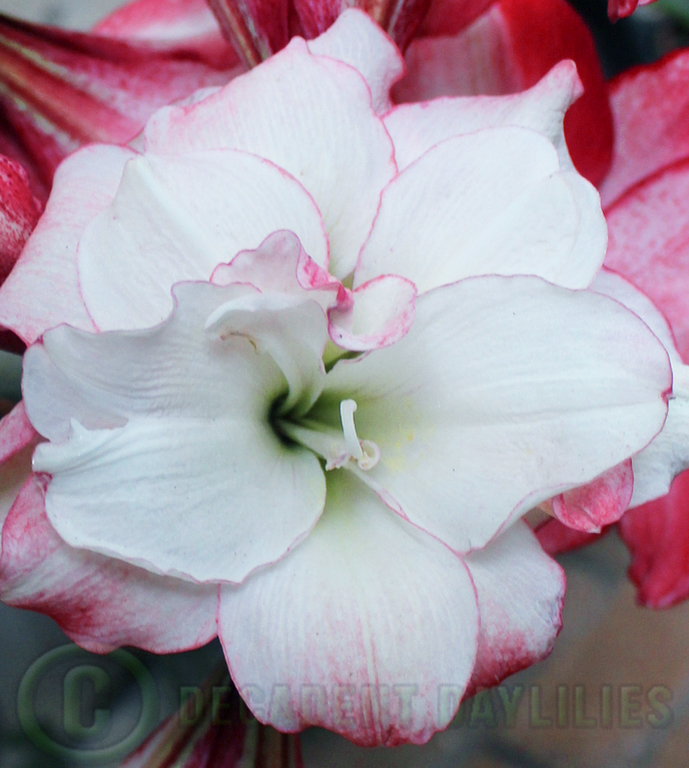 need much or no water during winter this also helps them to flower well. I have seen many hippeastrum species in Australia for sale the past few years one very exotic variety to note is Hippeastrum Cybister a spider type with finer petals.
need much or no water during winter this also helps them to flower well. I have seen many hippeastrum species in Australia for sale the past few years one very exotic variety to note is Hippeastrum Cybister a spider type with finer petals.
As the bulb matures and the Hippeastrum begins to bloom the leaves appear during or just after flowering. Growers should take care to make sure that the plant is well maintained, and every so often they should check in and do some basic maintenance to keep the Hippeastrums healthy. Gardeners should avoid exposing the plant to freezing cold conditions and should make it a point to keep the plant in a warm sheltered position out of direct sunlight especially in the summer months. Doing this allows for Hippeastrums to flower the following year, as well as providing the Hippeastrums with essential nutrients.
Propagating Hippeastrums
Hippeastrums can be propagated by division the small plantlets or offsets growing from the mother plant called pups. After dividing the pups they can be transplanted into another pot around May or June and then you would expect these pups to flower within three years. When you divide the bulbs make sure you start to dig six inches back from the bulbs to ensure you do not cut the bulbs or the bulbs basal plate. Another technique that is widely performed by commercial growers, known as cuttage. My mutual understanding is that this is a process of cutting the bulb into four parts, each complete with a part of the basal plate. A fungicide must be applied to all the cut sides of the bulb, place the bulb into 1/3 of quality potting soil, and place the cut bulb so that the cut side faces upwards. In no time, you will witness small plants along the basal plate.
Propagating Planting Hippeastrums seeds
Hippeastrum seed pods look very similar to daylilies in shape but their size is much larger and the seeds are flat and papery. Hippeastrum seeds can be also grown any time of the year using The Floatation Method. The floating method is easily done by getting a clear container that you can sterilise with boiling water. Then add in cool water that has been boiled and place the hippeastrum seeds so they float on top of the water for them to sprout. The seeds must be kept apart while floating on the water. It doesn’t take long, and you should see small roots emerging from the floating seeds. This is when you can plant the seeds into a pot with well drained damp soil. Plant only the roots in the soil, with the papery part of the seed sitting flat on top of the soil, as you notice the seeds germinate. Cover the seeds lightly with seed raising mix or gritty sand. Place a plastic bag over the top for some humidity, but not tight. After more leaves appear, take the plastic bag off and expose the seedlings to more air and light slowly. The seedlings must be kept moist at all times. With time, you can move the seedlings outside. The other method is to place the seeds directly on top of the damp potting mix.
Forcing Hippeastrum Bulbs to Flower
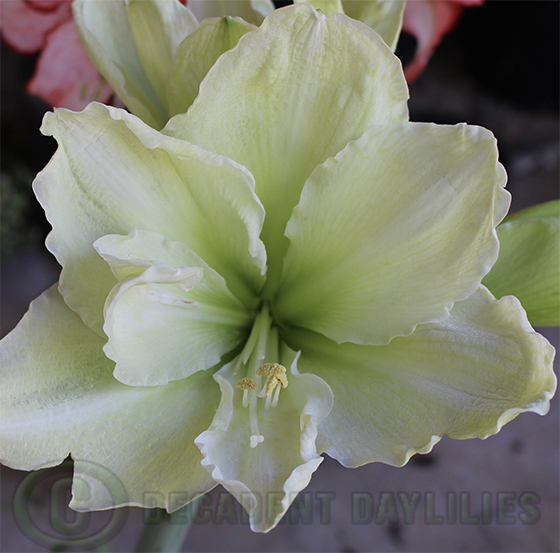 First, clean the bulb, snip off the roots to 2 or 3 inches, cut the green leaves to above the neck of the bulb, wash the bulb, and then let the bulb dry for 3 weeks.
First, clean the bulb, snip off the roots to 2 or 3 inches, cut the green leaves to above the neck of the bulb, wash the bulb, and then let the bulb dry for 3 weeks.
Storing the bulbs: after the hippeastrum bulb is completely dry, this will take 3 weeks. Then, you can store the bulb in the refrigerator for 6 weeks in the dark at a temperature of 2 C to 10 C but do not freeze the bulb. Take the bulb out of cool storage and plant the bulb 6 weeks before you want the bulbs to flower. Good luck.
Diseases of Hippeastrums
Diseases include red rust and stem rot in most cases the leaves develop red streaks or big patches of rusty leaves (Stagonospora Curtisii) in most cases if this disease goes untreated, red rust and stem rot can lead to the death of the hippeastrum. Overhead watering causes red rust and stem rot; this is the reason why I have stipulated exactly How to Water Your Hippeastrum Pants earlier. You can use mancazeb to prevent red rust and stem rot or water your Hippeastrums properly so you don’t get such diseases.
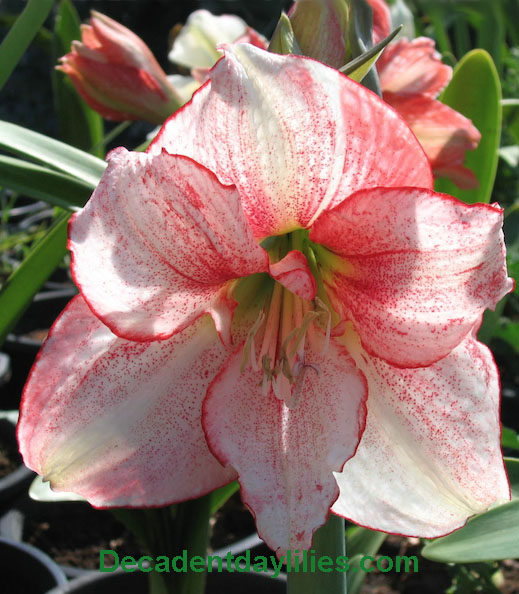 Remember not to overwater or under water your Hippeastrums they need to be kept damp, moisture stress can be from over watering or under watering. This can lead to the plant having yellow leaves. Keep the snails, slugs, slaters, mealy bugs and crinum grubs away, to control these pest you may need some suitable sprays to control them otherwise squash them as you see them.
Remember not to overwater or under water your Hippeastrums they need to be kept damp, moisture stress can be from over watering or under watering. This can lead to the plant having yellow leaves. Keep the snails, slugs, slaters, mealy bugs and crinum grubs away, to control these pest you may need some suitable sprays to control them otherwise squash them as you see them.
Hippeastrum Not Flowering
Do not cut or remove the leaves during the summer from the bulbous plant because they produce sugars and starches through the process of photosynthesis, this can cause the hippeastrum to not flower or delay flowering till the following season. Do not cut the leaves so you will enjoy the most magnificent hippeastrum flowers each year. Some of the most beautiful hippeastrum flowers to look out for are Worsleya Procera and Papilio Hippeastrum species. Pictured is some of many of my hippeastrum I grow including one of my seedlings that have flowered but has not multiplied a lot yet.
I hope my hippeastrum information, growing and planting tips gives you great success in cultivating the beautiful hippeastrum bulbs from seed to flowering stage.



